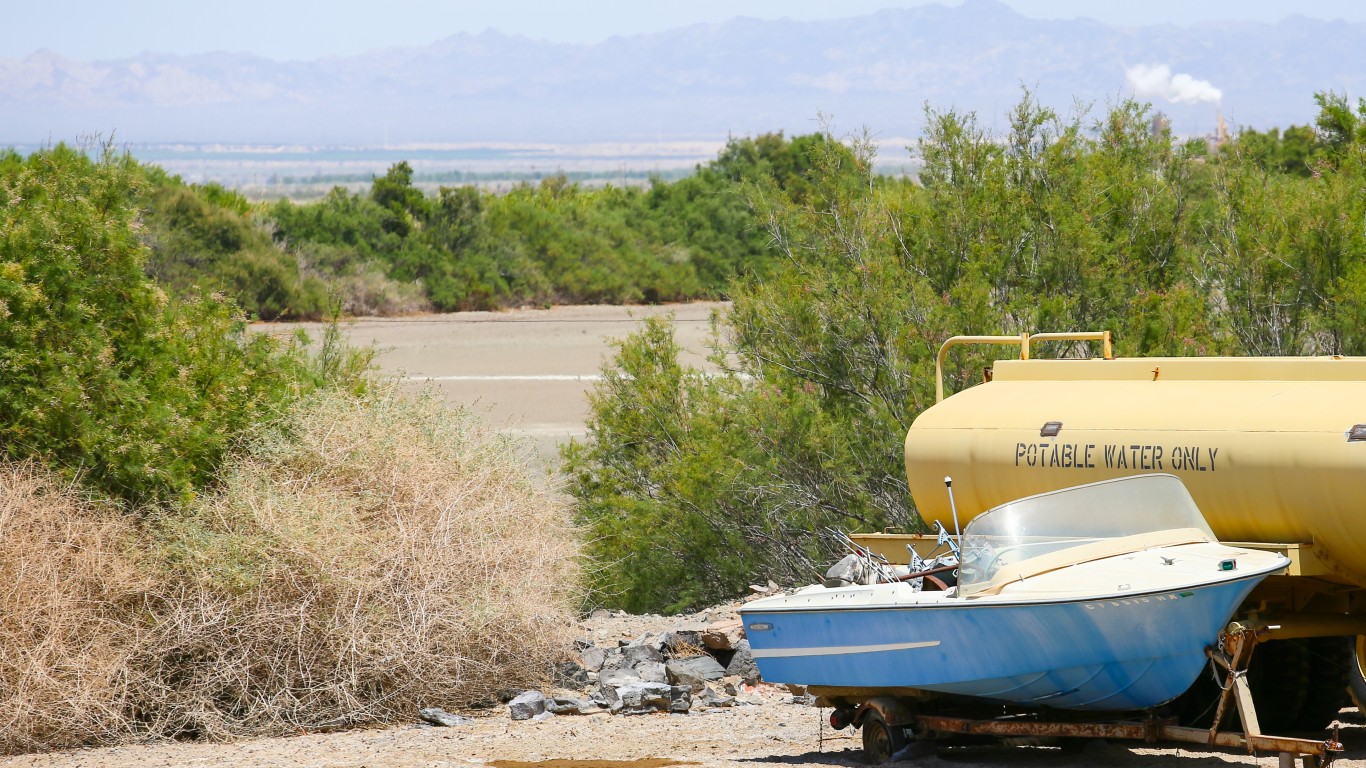
Education may not be the sole center of the lives of Americans. It does, however, mean a lot. People with less than a high school education tend to have low-paying jobs, which means they have low median incomes based on how the government measures them, and they are more likely to live in poverty. They are also more likely to have poor health care. Odds are that people who have a high school diploma do better across these metrics. People who have college degrees tend to do even better.
Education levels can be measured by geography. Among the most frequent cuts of the figures are state, city, and Zip code. The smaller the geographic area, the better lenses experts have to find specific problems.
Nationwide, an estimated 32.1% of American adults 25 and older have a bachelor’s degree or higher. But across the United States, there are Zip codes where fewer than 5% of adults have a bachelor’s degree or higher.
Using education data from the U.S. Census Bureau, 24/7 Wall St. identified the least educated Zip code in the United States. According to the Bureau of Labor Statistics, the unemployment rate among adults with a four-year college education was 5.5% in 2020. Meanwhile, the jobless rate among those with no more than a high school diploma was 9.0%. In most of the Zip codes we looked at, the average five-year overall unemployment rate among 25 to 64 year olds is higher than the comparable national rate of 4.4%
In addition to being better protected from unemployment, Americans with a bachelor’s degree also tend to have higher salaries. The average weekly wage for a college-educated worker in the United States is about 67% higher than it is for those with no more than a high school diploma. And in places with low educational attainment, incomes also tend to be lower than average.
The least educated Zip code in America is 92233. Here are the details:
> Location: Calipatria, California
> Adults with at least a bachelor’s degree: 1.6%
> Adults with at least a high school diploma or equivalent: 61.3% — 219th lowest of 20,112 Zip codes (tied)
> Median household income: $37,009 — 1,650th lowest of 20,099 Zip codes
> Estimated unemployment rate 2015-2019: 20.3% — 62nd highest of 20,109 Zip codes
> Population: 7,509
Methodology: To determine America’s least educated Zip code, 24/7 Wall St. reviewed five-year estimates of the percentage of adults 25 years and over with at least a bachelor’s degree from the U.S. Census Bureau’s 2019 American Community Survey.
We used Zip Code Tabulation Areas — a Census geography type which defines areal representations of United States Postal Service Zip codes (USPS Zip codes do not define geographic boundaries but instead are a network of mail delivery routes in a service area). We refer to Census ZCTAs as Zip codes.
Of the 33,120 Zip codes, the census publishes data for, 32,989 had boundaries that fell within one of the 50 states or the District of Columbia.
Zip codes were excluded if bachelor’s degree or higher attainment rates were not available in the 2019 ACS, if the Zip code’s 25 and older population was less than 1,000, or if the sampling error associated with a Zip code’s data was deemed too high.
The sampling error was defined as too high if the coefficient of variation — a statistical assessment of how reliable an estimate is — for a Zip code’s bachelor’s degree or higher attainment rate was above 15% and greater than two standard deviations above the mean CV for all Zip codes’ bachelor’s degree or higher attainment rate. We similarly excluded Zip codes that had a sampling error too high for their 25 and over population estimates, using the same definition.
The remaining 20,112 Zip codes were ranked based on the share of adults 25 years and over with at least a bachelor’s degree.
Additional information on the share of adults 25 years and over who have completed at least high school or its equivalent, median household income, unemployment rates for the 16 and older population in the civilian labor force, and population figures are also five-year estimates from the 2019 ACS.
Click here to read The Least Educated ZIP Codes in the Country
100 Million Americans Are Missing This Crucial Retirement Tool
The thought of burdening your family with a financial disaster is most Americans’ nightmare. However, recent studies show that over 100 million Americans still don’t have proper life insurance in the event they pass away.
Life insurance can bring peace of mind – ensuring your loved ones are safeguarded against unforeseen expenses and debts. With premiums often lower than expected and a variety of plans tailored to different life stages and health conditions, securing a policy is more accessible than ever.
A quick, no-obligation quote can provide valuable insight into what’s available and what might best suit your family’s needs. Life insurance is a simple step you can take today to help secure peace of mind for your loved ones tomorrow.
Click here to learn how to get a quote in just a few minutes.
Thank you for reading! Have some feedback for us?
Contact the 24/7 Wall St. editorial team.




